
Zero Wing is a 1989 side-scrolling shooter arcade video game developed by Toaplan and originally published in Japan by Namco and in North America by Williams Electronics. Controlling the ZIG space fighter craft, players assume the role of protagonist Trent in a last-ditch effort to overthrow the alien space pirate organization CATS. It was the eighth shoot 'em up game from Toaplan, and their fourteenth video game overall.
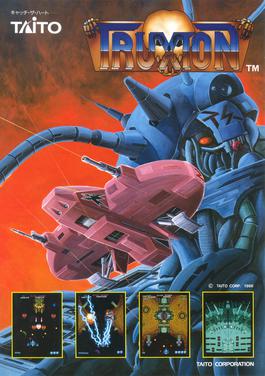
Truxton is a 1988 vertically scrolling shooter arcade video game originally developed by Toaplan and published in Japan and Europe by Taito, as well as in North America by Midway. Set in a future where the Gidans alien race led by Dogurava invaded the fictional planet Borogo, players assume the role of fighter pilot Tatsuo taking control of the Super Fighter ship on a last-ditch effort to overthrow the alien invaders.

Super Hydlide is an action role-playing game for the Sega Genesis/Mega Drive. It was originally released in 1987 in Japan only under the title Hydlide 3: The Space Memories for the MSX, MSX2, and PC-8801mkII SR. It's the third game in the Hydlide series. Ports were also released for the X1, Famicom, X68000, Microsoft Windows, and Nintendo Switch. The game was developed by Hydlide series veterans T&E Soft and released worldwide on the Sega Genesis / Mega Drive on October 6, 1989, in Japan, early 1990 in the United States, and 1991 in Europe. This remake evidences substantial graphical upgrades to the original Hydlide 3, though the gameplay remains largely identical. Before its release, it was called Hollo Fighter in some Sega advertising material and was one of the first third party published titles to be released in the U.S, the other being Air Diver.
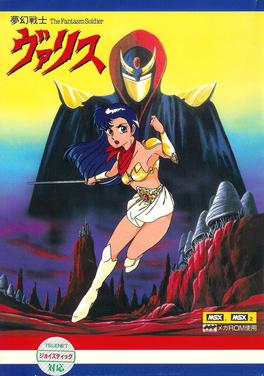
Valis: The Fantasm Soldier is a 1986 action-platform video game originally developed by Wolf Team and published by Telenet Japan for the MSX, PC-8801, X1, FM-7, and PC-9801 home computers. It is the first entry in the Valis series. It stars Yuko Asou, a Japanese teenage schoolgirl chosen as the Valis warrior and wielder of the mystical Valis sword to protect the Earth, the land of spirits, and the dream world Vecanti from demon lord Rogles. Throughout the journey, the player explores and search for items and power-ups, while fighting enemies and defeating bosses to increase Yuko's attributes.

Hydlide is an action role-playing game developed and published by T&E Soft. It was originally released for the NEC PC-6001 and PC-8801 computers in 1984, in Japan only; ports for the MSX, MSX2, FM-7 and NEC PC-9801 were released the following year. A Nintendo Switch port based on the PC-8801 version was released on December 21, 2023 by D4 Enterprise.

Valis II is a 1989 action-platform video game originally developed by Laser Soft, published by Telenet Japan and NEC for the PC Engine CD-ROM²/TurboGrafx-CD. A home computer version was released for PC-8801, MSX2, PC-9801 and X68000. A super deformed-style remake was also released in 1992 for the Sega Mega Drive/Genesis. It is the second entry in the eponymous series. It stars Yuko Asou, a Japanese schoolgirl teenager chosen to become the Valis warrior by wielding the titular mystical sword, after defeating the demon lord Rogles. The dream world Vecanti fell under the rule of emperor Megas, whose hatred towards his brother Rogles and bloodthirsty tendencies seeks to wipe out traces of the former tyrant, including his supporters. Gameplay varies between each version but all share similar elements, as the player explores and search for items and power-ups, while fighting enemies and defeat bosses.

Tommy Lasorda Baseball is a 1989 baseball video game developed and published by Sega as one of the six launch titles for the Sega Genesis in the North America and for the Sega Mega-Tech arcade system. It is a follow-up to the arcade game Super League (1987). It prominently features former MLB player Tommy Lasorda, who was manager of the Los Angeles Dodgers at the time. In the game, players compete with either AI-controlled opponents or against other players across single exhibitions, open matches or a 30-game season.

Granada is a shooter video game developed and originally published by Wolf Team exclusively for the X68000 in Japan on 20 April 1990. The ninth title to be created and released by Wolf Team for the X68000 platform, the game is set on a futuristic Africa in 2016 where a war erupted over mining rights towards rare metals and has quickly escalated due to newly-introduced weapons called Maneuver Cepters, as players assume the role of mercenary Leon Todo piloting the titular Maneuver Cepter tank unit in an attempt to stop the conflict once and for all. Its gameplay mainly consists of action and shooting mixed with mission-based exploration using a main two-button configuration.
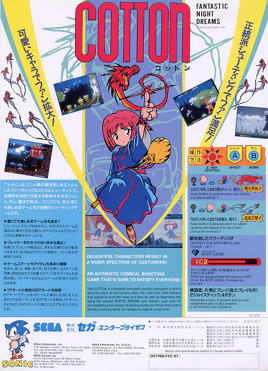
Cotton: Fantastic Night Dreams is a scrolling shooter video game developed by Success and originally released in Japanese arcades in 1991. The first installment in the Cotton series, players assume the role of the young witch Cotton who, alongside her fairy companion Silk, sets out on her broomstick on a quest to defeat several monsters and get her Willow candy. Its gameplay mainly consists of shooting mixed with role-playing game elements using a main two-button configuration. It ran on the Sega System 16 hardware.

Cyber Core is a 1990 vertically scrolling shooter video game developed by Alfa System and published in Japan by Information Global Service (IGS) and in North America by NEC for the TurboGrafx-16. Set in the year 2269 where Earth has been overrun by an alien race known as Hyper Insects, the player controls a Chimera bio-fighter craft, piloted by the enforcer Rad Ralph in order to fend off the invaders and reclaim the planet. Similar to Dragon Spirit, Ralph has a projectile weapon for destroying air-based enemies and a bomb for destroying ground-based enemies.

Nostalgia 1907 is a 1991 adventure video game developed by Takeru, and published by its label Sur Dé Wave. Originally released for the Sharp X68000, it was later ported to the FM Towns Marty, PC-9801, and Sega Mega CD. The player assumes the role of a passenger aboard a cruise liner named the Nostalgia that has been taken captive by a criminal looking for an artifact.

D4 Enterprise Co., Ltd. is a Japanese video game publisher currently specializing in content delivery services like Project EGG, EGGY and PicoPico over the Internet. The company has also collaborated with Nintendo to re-release Neo Geo, MSX and arcade titles for the Wii, and MSX titles for the Wii U, as part of the Virtual Console services on both consoles.
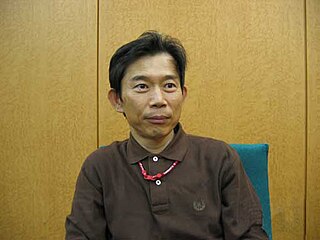
Hiroyuki Takahashi, is the president of the video game development studio Camelot Software Planning. He has participated in most of the company's projects as a game designer, producer, and writer.
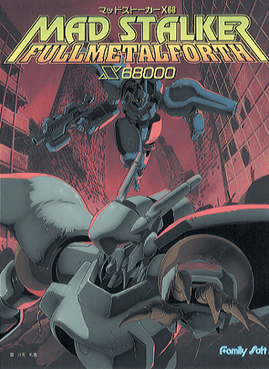
Mad Stalker: Full Metal Forth is a 1994 side-scrolling beat 'em up game developed by Fill-in-Cafe and published by Family Soft in Japan for the X68000. It is the fourth game to be created and released by both Fill-in-Cafe and Family Soft for the X68000 platform late into its commercial life span, after being discontinued in 1993.
Takeru, also known as Sur Dé Wave, was a Japanese video game developer.
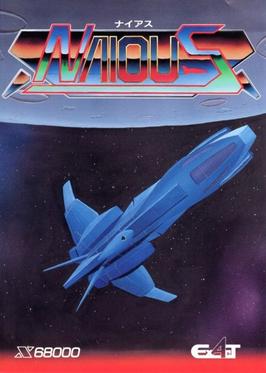
Naious is a scrolling shooter video game developed and published by Exact exclusively for the Sharp X68000 in Japan on October 26, 1990. It is both the first title to be created and released by Exact for the X68000 platform, as well as the first project produced by the company.
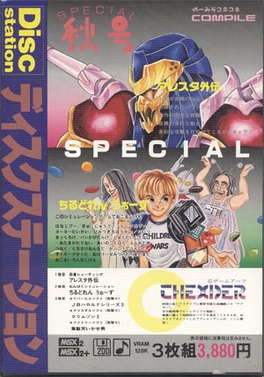
Aleste Gaiden is a 1989 vertically scrolling shooter video game developed and published by Compile for the MSX2 home computer. A follow-up to Aleste (1988), it was included as part of the autumn special edition of Disc Station, a monthly disk publication by Compile. It is a sidestory to the main series, taking place in an alternative continuity. Controlling the soldier Raymond Waizen, protagonist of the first game wearing a cybernetic ninja suit, the player must overthrow the supercomputer DIA 51 by fight waves of enemies and bosses, while avoiding collision with their projectiles and other obstacles.
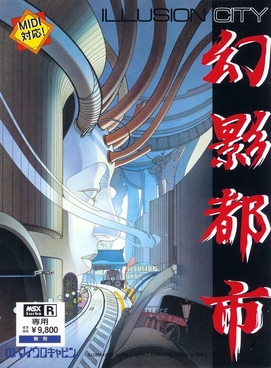
Illusion City is a role-playing video game originally developed and published by Microcabin for the MSX Turbo R home computer. It was later ported to PC-88 and PC-98 computers, FM Towns, X68000, and Sega Mega-CD. The story takes place in the 21st century after Hong Kong was devastated by a demonic attack, before the crisis was isolated and the region was reformed under new order by SIVA corporation. The game follows demon hunter Tianren, gathering information in order to unravel the mystery surrounding the demonic beings and SIVA corporation. Gameplay features a growing party led by Tianren navigating the city, talking with non-playable characters, exploring complex areas, and taking part in turn-based battles against enemies.

Namachūkei 68 is a 1991 sports video game developed and published by Konami for the X68000. In the game, players have the choice to compete in matches against computer-controlled opponents or other human players in either a single game or a full season. The players selects between 12 teams that come with the game, but can also create their own team as well as manage the statistics of each individual player. Gameplay incorporates multiple camera angles to present a pseudo-3D perspective, in a manner resembling a sports television broadcast.



















